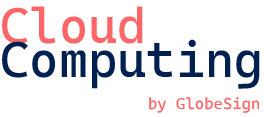You may not realize it, but the cost of cloud computing can spiral out of control without the right approach to cost management. As organizations increasingly turn to the cloud to enhance their technological capabilities, understanding how to effectively optimize cloud costs has never been more crucial. In this blog post, we’ll dive deep into the world of cloud cost optimization, exploring effective strategies, tools, and best practices that can help your organization save money and maximize its cloud investment.
Table of Contents
- Understanding Cloud Cost Optimization
- Key Strategies for Cloud Cost Optimization
- Real-World Examples of Cost Optimization
- Benefits of Cloud Cost Optimization
- Tools and Technologies for Cloud Cost Optimization
- Conclusion: Looking Ahead
- FAQ
Understanding Cloud Cost Optimization
At its core, cloud cost optimization is the process of managing and reducing your cloud spending while maintaining performance and efficiency. Imagine it as tuning a car: you want to achieve the best performance possible without over-tuning or over-spending on unnecessary features. Just as a car owner checks their fuel efficiency regularly, businesses need to monitor their cloud expenses continuously.
Today, cloud service providers (CSPs) offer a myriad of services, and while this flexibility is fantastic for innovation, it can also lead to overspending if not monitored carefully. According to a report from Flexera, 62% of companies have reported wasting money on unused cloud resources. Thus, effective cloud cost optimization strategies are essential for any organization leveraging cloud technologies.
Key Strategies for Cloud Cost Optimization
- Choosing the Right Pricing Model: Understanding the various pricing models offered by CSPs is crucial. Opt for pay-as-you-go, reserved instances, or spot instances based on your needs.
- Resource Monitoring and Management: Utilize tools and dashboards specifically designed for cloud cost analysis. Regularly monitoring usage helps give insight into spending habits.
- Automating Resource Scaling: Implement auto-scaling to match your resource allocation with actual demand, which can drastically reduce costs.
- Right-Sizing Instances: Regularly review your instances. You might find that high-performance instances are underused, and downsizing could lead to substantial savings.
- Implementing Tagging Strategies: Use resource tagging for better tracking and accountability. This will help identify which departments or projects are incurring costs.
- Utilize Cloud Cost Management Tools: Invest in tools like AWS Cost Explorer, Azure Cost Management, or Google Cloud’s Pricing Calculator for detailed analysis and recommendations.
Real-World Examples of Cost Optimization
Let’s explore a few organizations who have successfully implemented cloud cost optimization strategies:
- Spotify: Initially, Spotify faced issues with high cloud spending. By leveraging a combination of resource tagging and automated management practices, they not only reduced costs by 30% but also improved resource efficiency.
- Nextdoor: Nextdoor, a neighborhood social network, migrated to the cloud but initially overspent on resources. By implementing right-sizing queries and utilizing data analytics, they were able to save over 40% on cloud bills.
- Unilever: Unilever adopted a cloud-first strategy, and by utilizing Multi-Cloud Cost Management techniques, they improved resource efficiency and made better financial decisions based on clearer visibility into spending patterns.
Benefits of Cloud Cost Optimization
The benefits of cloud cost optimization extend beyond just reducing spending. Here are some of the key advantages:
- Improved Budget Management: Gaining clear visibility into cloud spending allows organizations to budget more efficiently and allocate resources effectively.
- Increased Resource Efficiency: By optimizing your cloud resources, you can ensure you are only paying for what you actually use, minimizing waste.
- Enhanced Performance: A well-optimized cloud infrastructure ensures that applications run smoothly, leading to better user experiences.
- Scalability: As organizations grow, optimized performance can help in scaling up or down without incurring unnecessary costs.
Tools and Technologies for Cloud Cost Optimization
Utilizing the right tools can make a significant difference in optimizing your cloud costs. Here are some tools that can help:
- AWS Cost Explorer: This tool offers a user-friendly interface for analyzing your spending trends and provides recommendations for cost-saving opportunities.
- CloudHealth by VMware: A comprehensive platform that provides insights and governance over your cloud costs, usage, and performance.
- Azure Cost Management: Built into the Azure ecosystem, this tool gives you insights into your cloud spending and helps implement budgets and alerts.
- Cloudability: This monitoring tool aids organizations in controlling their cloud spending by delivering actionable insights constantly.
Conclusion: Looking Ahead
Cloud cost optimization is not just a one-time task; it’s an ongoing journey that requires attention and adjustments as technology evolves and your organization grows. As cloud technologies become more intricate, methods for tracking costs and maintaining efficiency will continue to adapt. By implementing robust optimization strategies and leveraging the right tools, organizations can ensure they’re maximizing their cloud investments while minimizing unnecessary expenses.
In the future, we can expect to see the emergence of AI and machine learning in cloud cost optimization, providing even more sophisticated and automated solutions to manage resources effectively. As enterprises navigate this cloud journey, staying informed and adaptable will be crucial for long-term success.
Optimize now to thrive later!
FAQ
What is cloud cost optimization?
Cloud cost optimization is a process that helps organizations manage and reduce cloud spending while maintaining performance and efficiency.
How can I effectively optimize my cloud costs?
You can optimize your cloud costs by choosing the right pricing model, implementing resource monitoring, automating resource scaling, and utilizing tagging strategies.
What tools are available for cloud cost management?
Tools like AWS Cost Explorer, Azure Cost Management, and Cloudability can help manage and analyze your cloud costs effectively.
Why is it important to monitor cloud expenses?
Monitoring cloud expenses is crucial to identify wastage, ensure cost savings, and make informed financial decisions.
